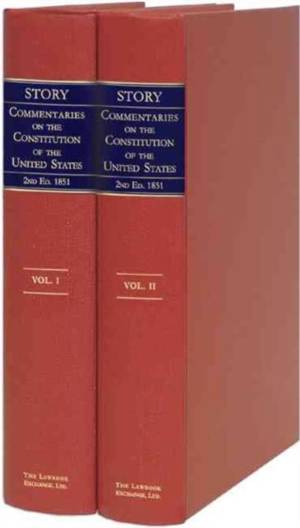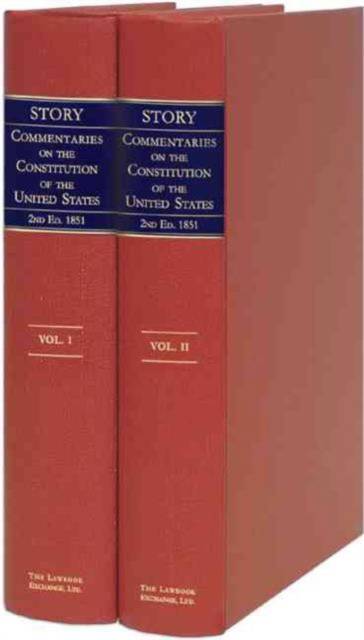
- Afhalen na 1 uur in een winkel met voorraad
- Gratis thuislevering in België vanaf € 30
- Ruim aanbod met 7 miljoen producten
- Afhalen na 1 uur in een winkel met voorraad
- Gratis thuislevering in België vanaf € 30
- Ruim aanbod met 7 miljoen producten
Zoeken
Commentaries on the Constitution
With a Preliminary Review of the Constitutional History of the Colonies and States Before the Adoption of the Constitution, Second Edition 1851 (2 vols.)
Joseph Story
Hardcover | Engels
€ 176,95
+ 353 punten
Omschrijving
Reprint of the second edition, with additions by his son, W.W. Story [1819-1895]. Originally published: Boston: Little, Brown and Company, 1851. Two volumes. xxxiii, 734; 632 pp. First published in 1833, this work is generally considered to be the most important work written on the American Constitution before the Civil War, and it remains an important work. Dedicated to John Marshall, it presents a strongly Nationalist interpretation. It is divided into three books. Book I contains a history of the colonies and discussion of their charters. Book II discusses the Continental Congress and analyzes the fl aws that crippled the Articles of Confederation. Book III begins with a history of the Constitution and its ratification. This is followed by a brilliant line-by-line exposition of each of its articles and amendments. Comparing it to The Federalist, James Kent said that Story's work was "written in the same free and liberal spirit, with equal exactness and soundness of doctrine, and with great beauty and eloquence of composition.... Whoever seeks...a complete history and exposition of this branch of our jurisprudence, will have recourse to [this] work, which is written with great candor, and characterized by extended research, and a careful examination of the vital principles upon which our government reposes." cited in Marvin, Legal Bibliography 669-670. Apart from James Kent, no man has had greater influence on the development of American law than Joseph Story [1779-1845]. He was Dane Professor of Law at Harvard, where he played a key role in the growth of the school and the establishment of its national eminence. His many books have been cited extensively to this day. An associate justice of the U.S. Supreme Court from 1812 to 1845, and the youngest person ever to serve on the Court, he was the author of several landmark decisions, such as Martin v. Hunter's Lessee and Prigg v. Pennsylvania.
Specificaties
Betrokkenen
- Auteur(s):
- Uitgeverij:
Inhoud
- Aantal bladzijden:
- 1416
- Taal:
- Engels
Eigenschappen
- Productcode (EAN):
- 9781584775157
- Verschijningsdatum:
- 4/04/2016
- Uitvoering:
- Hardcover
- Formaat:
- Genaaid
- Gewicht:
- 675 g

Alleen bij Standaard Boekhandel
+ 353 punten op je klantenkaart van Standaard Boekhandel
Beoordelingen
We publiceren alleen reviews die voldoen aan de voorwaarden voor reviews. Bekijk onze voorwaarden voor reviews.













